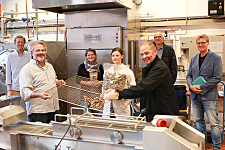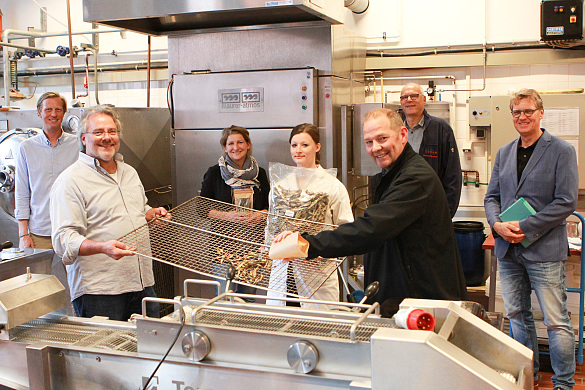
How can waste heat from the manufacture of tiles be used to dry fish? Scientists at Bremerhaven University of Applied Sciences have started working on this question.
In a partnership with the tile manufacturer NordCeram GmbH and the fish dealer Friedrich Wilhelm Lübbert GmbH & Co. KG, the TROCKNFISH collaborative project aims to develop a technological process to use industrial waste heat for the production of high-quality dried fish products. There are to be positive impacts both on the environment due to a reduction in carbon emissions, and on the level of production costs.
The manufacture of tiles generates heat. And the production of dried fish also needs large quantities of hot air, which need to be produced specifically for this purpose. The idea that it might be possible to combine the two industries came from Benjamin Küther, liaison officer for business cooperation at Bremerhaven University of Applied Sciences. He received a query about product development from Lübbert, and set up the contact between the company and the researchers from the university.
It proved quite easy to find a partner for the project: the tile manufacturer NordCeram is located right next to the fish processor in Bremerhaven’s Fisheries Port.

Industrial companies can play a significant role in the future supply of heat. There is significant potential wherever there are energy-intensive firms which, despite efficient production processes, can generate further synergies to save energy via new cooperation on the use of heat.
In order to make use of this potential, barriers which prevent cooperation on (waste) heat need to be identified and removed so that primary energy can be saved and carbon emissions cut across the whole country.
If another company with an appropriate heat sink can be located in the immediate vicinity of a source of industrial (waste) heat, the linking up of the heating systems of the two companies can avoid the use of additional (fossil) primary energy for the heat sink. The waste heat would generate an economic benefit for both companies (a win-win situation) and significantly reduce the total combined primary energy consumption of the two firms. This would help both to improve the economic performance of the companies (thus boosting the regional economy) and to mitigate climate change.
The project is financed with funding from the European Union and the State of Bremen – by the Senator for Climate Change Mitigation, Environment, Mobility, Urban

This project focus on innovation an is supported by our heroine Felicia